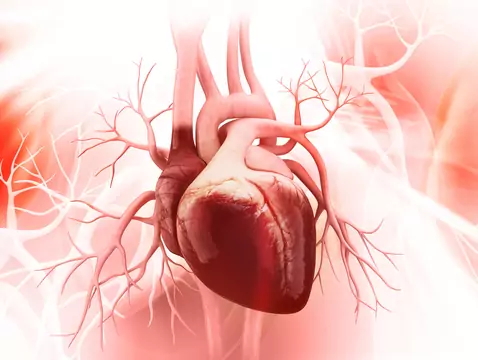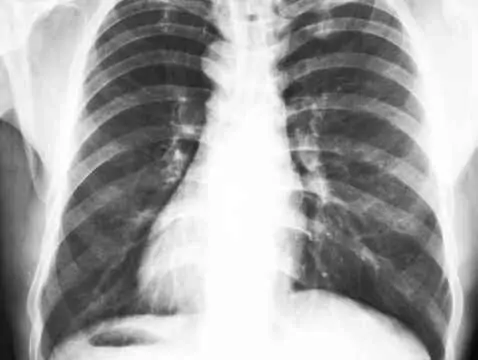
Hypertension in children: causes and treatment
Arterial hypertension, which is most often associated with adults, unfortunately also increasingly affects children and adolescents. This important health problem, if not spotted and treated early,...

Kawasaki disease: a possible cause of heart attacks in children
Kawasaki's disease is a condition with unclear causes, which can even result in a child having a heart attack. Therefore, as the complications of the disease can even be fatal, it is extremely...

The persistent ductus arteriosus Botallus (GCFA) - causes, course and treatment
The persistent ductus arteriosus is a remnant from fetal life. It is the vessel that connects the pulmonary artery to the aorta and is one of the most common heart defects.

Tetralogy of Fallot - diagnosis and treatment
Falott's syndrome is classified as a congenital heart defect involving anatomical abnormalities of the heart. Falott's tetralogy is one of the most common cyanotic malformations in children.

Heart failure in children - pathomechanism, diagnosis, treatment
Heart failure in children is one of the big diagnostic and therapeutic challenges for paediatric cardiologists, neonatologists and paediatricians. In adults, the diagnosis and clinical picture can...

Left heart hypoplasia syndrome
Left heart hypoplasia syndrome is a critical congenital heart defect. It is characterised by underdevelopment of the left side of the heart, mainly the left ventricle. Symptoms develop dynamically...

Hypertension in children
A person suffering from hypertension in our imaginations is usually an elderly man with a big belly and a cigarette in his mouth. However, the truth is different, because most people over 60 suffer...

Congenital heart defects - are they all dangerous?
Some congenital heart defects are diagnosed intrauterine, while others you may not know about for the rest of your life. Although the news of a child's heart defect most often falls on parents like a...

Takayasu disease and its causes
Takayasu disease is very difficult to diagnose due to the variety of its symptoms.

Heart defects in children
Among the most common congenital defects occurring in newborns and children are defects of the heart and circulatory system. A congenital heart defect is one that develops during foetal life. If a...

Are children implanted with pacemakers?
A child's heart functions properly, contracts and contracts at the right rate and, importantly, does not cause pain. It has its own natural pacemaker (stimulus-conduction system). If there are...

Metabolic syndrome in children - causes, symptoms, diagnosis, treatment, cardiovascular consequences
The metabolic syndrome is a set of complications of obesity that lead to premature type 2 diabetes, atherosclerosis and cardiovascular complications. It can affect 40-70% of obese adolescents.

Heart murmur in a child - causes, symptoms, diagnosis, treatment
Tones and acoustic phenomena called murmurs can be heard over the heart. Murmurs can be systolic, diastolic, mixed and organic, innocent and functional. Organic ones are indicative of anatomical...

Heart diseases requiring prophylaxis of bacterial endocarditis - causes, symptoms, diagnosis, treatment
Bacterial endocarditis is an infection involving the heart valves, the endocardium of the ventricles and atria, the large blood vessels, and the artificial material used for repair procedures. It is...

Coarctation of the aorta in a child - causes, symptoms, diagnosis, treatment
The aorta is the main artery that exits the left ventricle of the heart and distributes oxygenated blood throughout the body. Coarctation of the aorta is a defect involving narrowing of the aortic...

Heart defects requiring urgent intervention in the neonatal period - causes, symptoms, diagnosis, treatment
Congenital heart defects occur in 7-8 per 1000 live-born infants and account for approximately 20% of all deaths in this group of children. In most cases, the cause of the heart defect remains...

Post-exertional syncope - causes, symptoms, diagnosis, treatment
Syncope is a temporary loss of consciousness and muscle tone resulting from reduced blood flow through the brain. It is estimated that approximately 15% of children and adolescents experience at...

24-hour ambulatory blood pressure monitoring in children
According to expert recommendations, blood pressure should be measured at every preventive medical appointment in children over 3 years of age. In younger children, this should be done when illness...

Stress test in children - indications, contraindications, how to perform
The exercise stress test is a non-invasive diagnostic method for assessing cardiac symptoms during controlled exercise and, on this basis, determining the degree of cardiac dysfunction or the...

Kawasaki disease, a dangerous disease for the heart - causes, symptoms, diagnosis, treatment
Kawasaki disease is an acute vasculitis of undetermined aetiology. It is assumed that the cause may be an immune reaction related to a viral infection. Children aged 6 months to 5 years are most...

Measurement of blood pressure in children
Blood pressure measurements in children are very important as hypertension can be a symptom of many diseases (e.g. kidney disease) and is associated with many complications.

Congenital heart defects in children - causes, symptoms, diagnosis, treatment
In most cases, congenital heart defects are diagnosed in children after birth. Some of these do not cause any symptoms for a long time, others are life-threatening and surgery is therefore required....


